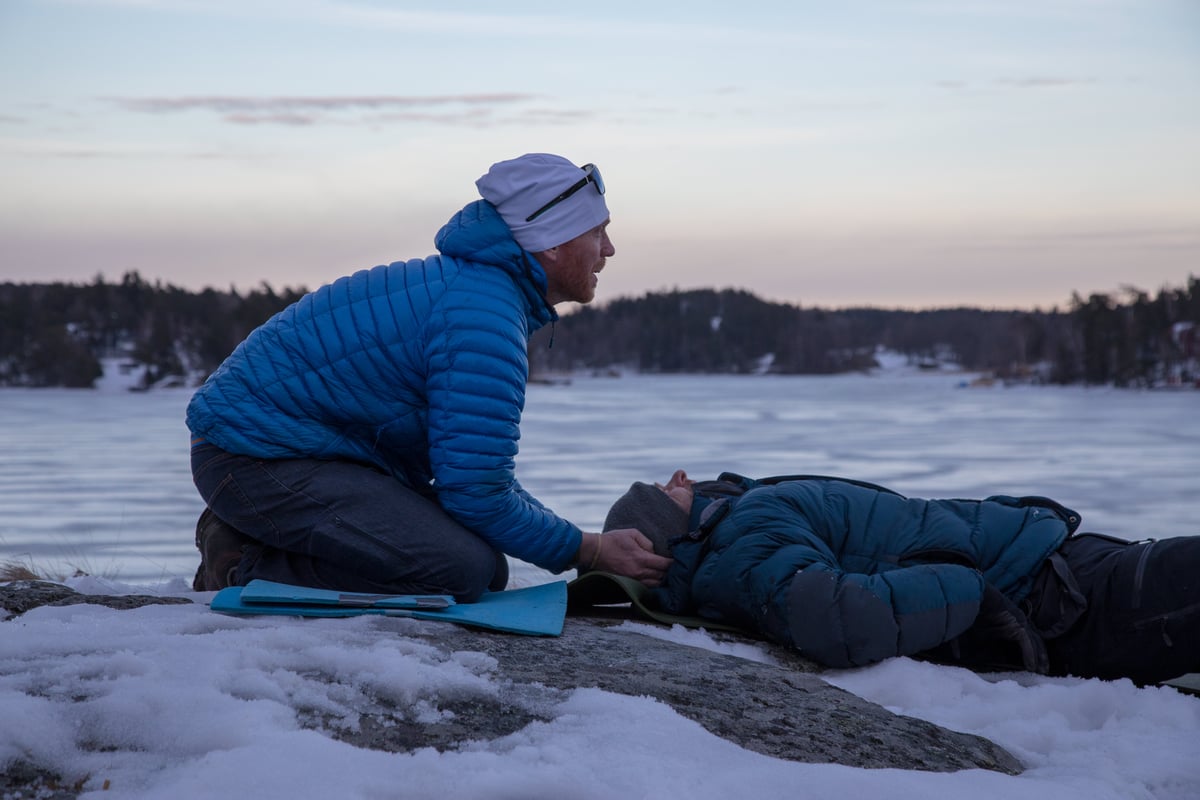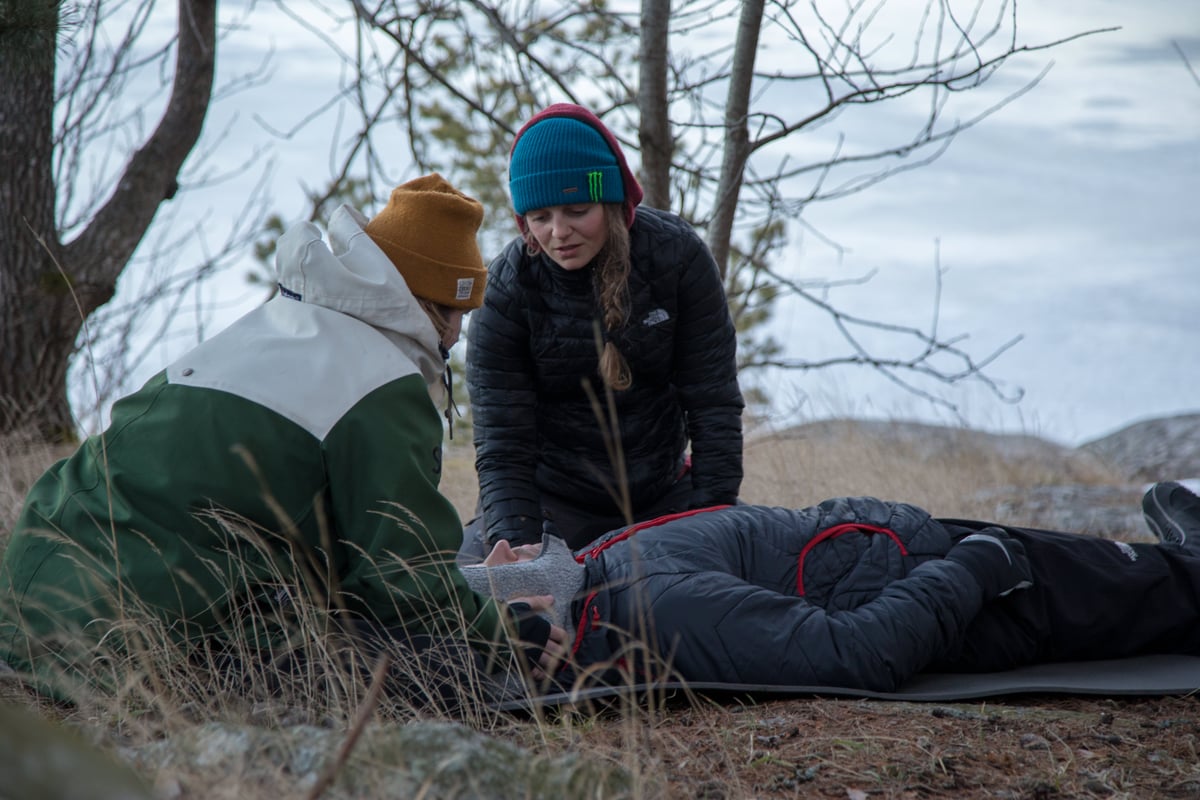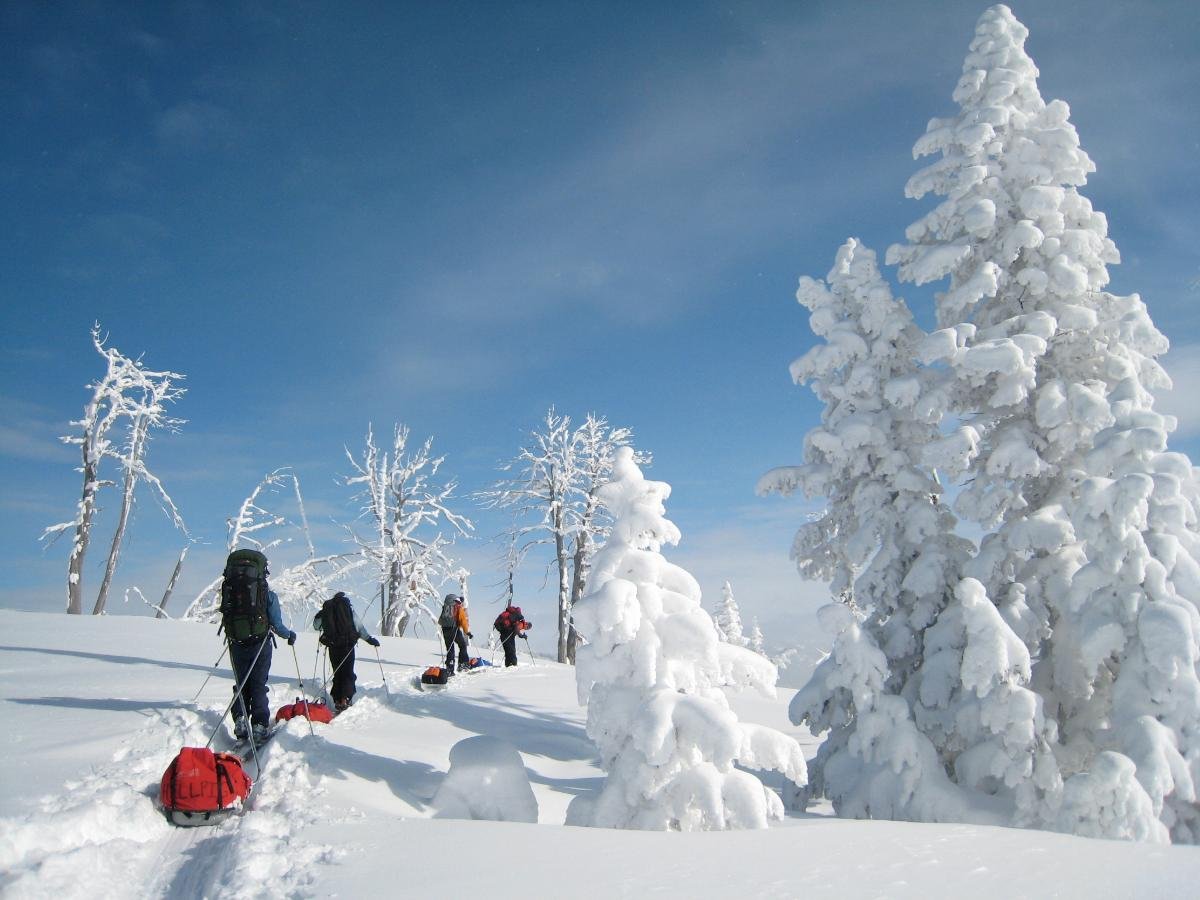
The Setting
You’ve been leading an outdoor skills course for young adults, most of it taught indoors or on day hikes. This weekend is the culminating overnight snowshoe trip where you plan to sleep in hollowed-out snow shelters, called quinzhees.
The snowshoe hike went according to plan and you and your group arrive at your planned campsite. Everyone appears weary, happy, and healthy. You note that it is much colder than any previous trip you’ve led, with temperatures hovering near 0°F (-18°C).
You start digging snow shelters to sleep in. Shelter digging is strenuous, and the dry snow needs time to consolidate before it can be excavated into a quinzhee. You use this time to check how everyone is doing; it’s obvious some of the participants have gotten sweaty and are tired from the hard work.
You decide to be a good role model: you sit on a pad, pull off your boots to look at your toes, and ask everyone else to do the same.
Lo and behold, one of the students has toes that are pale and numb. They say their toes have been cold and numb all day, but they thought could get by until getting into their sleeping bag to warm.
SOAP Report
Subjective
The patient is a 20-year-old with a local cold injury. The mechanism for injury is one day of exposure to cold temperatures.
Objective
The patient is warm and resting in camp. All ten toes are numb, pale, and cold to the touch. Their fingers are warm, with normal circulation, sensation, and motion (CSM). There is a good pedal pulse and they can move their toes. The big toe on the left foot is cold, pale, and hard. The other toes are pale and cold, but soft. No other injury noted.
Vital Signs
|
Time |
4:00 p.m. |
|
Level of Responsiveness (LOR) |
A+Ox4 |
|
Heart Rate (HR) |
72, strong, regular |
|
Respiratory Rate (RR) |
10, regular, easy |
|
Skin Color, Temperature, Moisture (SCTM) |
Mucous membranes are pink, skin is warm, dry |
|
Blood Pressure (BP) |
strong radial pulse |
|
Pupils |
Pupils equal, round, responsive to light (PERRL)/p> |
|
Temperature (T°) |
not taken |
History
|
Symptoms: |
Numb toes |
|
Allergies: |
Denies |
|
Medications: |
None |
|
Pertinent Hx: |
Patient reports several previous episodes where their toes got cold and very painful when warmed. They deny having previously had frostbite. |
|
Last in/out: |
Patient is well hydrated, with 4 liters of water drunk today and clear urine. They have eaten throughout the day and had a normal bowel movement this morning. |
|
Events: |
Snowshoe hike of 3 miles and shoveling snow for shelters. |
Stop reading!
What is your assessment and plan? Take a few minutes to figure out your own assessment and make a plan. Don’t cheat—no reading on without answering this first!

Assessment
- Possible local cold injury to the toes
Plan
- Warming with skin to skin contact. Immersion in warm water if possible.
- Protect injury from the cold.
- If apparent frostbite after warming, develop an evacuation plan.
- Check every other member of the group
Anticipated problems
- The toes are frostbitten.
- The patient will be unable to walk.
Notes from NOLS on Frostbite, Cold Injuries, and Rewarming
The textbook description of frostbitten digits describes them as:
- Cold
- White or Pale
- Waxy
- Numb
In reality, toes that look like this can just be cold. The description of white or pale and hard digits suggests frostbite, but you cannot know the extent of the injury until the digits are warm.
The trip leader in this case study catches the injury early and has to decide to thaw or not to thaw.
Thawed frostbitten tissue can become swollen and very painful, cannot be allowed to re-freeze, and will be unusable. There is no predictable relationship between how long tissue is frozen and the extent of injury, except a general sense that thawing sooner is better. People can walk on frozen feet, but there is concern that this will worsen the injury or that heat generated while walking will cause slow thawing (which should be avoided).
Best Method for Thawing
The ideal treatment for frostbitten tissue is: rapid, even thawing in a warm water bath (99-102°F/37-39°C). This is because it allows the affected tissue to warm evenly.
Running affected limbs under a faucet of water, for example, won't work since this thaws the tissue unevenly. Uneven thawing can cause damage since it doesn’t open enough blood vessels and can deprive thawing cells of warm, oxygen-rich blood, which they need as they begin to metabolize again. Be mindful of water temperature, too. Water that is too cold warms the tissue too slowly, and water that is too hot is unnecessarily painful and may burn tissue.
Thawing with hot air, in front of a fire, or by rubbing are all also bad choices because they will be either uneven, slow, or can cause burns.
In the field, skin-to-skin contact for warming is often the practical solution.
The clock starts ticking for lasting tissue damage once the tissue is thawed (a complication of frostbite is the formation of clots in small blood vessels after thawing, which may need to be dissolved via treatment in a hospital).
Indicators of possible frostbite, after tissue has been warmed, include:
- Swelling
- Continued numbness
- Gray or dark purple color
- Blisters.
In these cases, evacuation as soon as possible after thawing is recommended.
The Story Continues...
You offer that the patient can rewarm their toes on your belly and gasp when the cold toes touch your skin. The patient’s eyes well with tears from the pain as their toes warm over 15-20 minutes.
While the warming is progressing the rest of the group fires up their stoves for hot drinks and makes sure no one else is cold or has a local cold injury.
You know the warming has concluded when the toes are red to their tips. The pain has subsided to a tolerable level. The patient can feel to the end of their toes, with the exception of the left big toe, which is a dark purple and still cold.
The patient’s feet are loosely wrapped in gauze and checked periodically for warmth and circulation. The patient is placed in a sleeping bag and kept warm, hydrated, and well-fed. They take 600 mg of ibuprofen for the pain.
The Story Ends
Using a cell phone, you call local Search and Rescue and initiate their support. Within two hours a snow machine arrives and the patient is bundled into sleeping bags and driven to the road and then to the hospital. In the end they lose the tip of the big toe and the toenail, but retain overall function.
- Wilderness First Responder
- First Aid
- Case Studies
- Winter
- Wilderness Medicine
- Frostbite
- Illness & Injuries
Written By
Tod Schimelpfenig
As a NOLS Instructor since 1973 and a WEMT, volunteer EMT on ambulance and search and rescue squads since the 70s, Tod Schimelpfenig has extensive experience with wilderness risk management. He has used this valuable experience to conduct safety reviews as well as serve as the NOLS Risk Management Director for eight years, the NOLS Rocky Mountain Director for six years, and three years on the board of directors of the Wilderness Medical Society, where he received the WMS Warren Bowman Award for lifetime contribution to the field of wilderness medicine. Tod is the founder of the Wilderness Risk Manager’s Committee, has spoken at numerous conferences on pre-hospital and wilderness medicine, including the Australian National Conference on Risk Management in Outdoor Recreation, and has taught wilderness medicine around the world. He has written numerous articles on educational program, risk management and wilderness medicine topics, and currently reviews articles for the Journal of Wilderness and Environmental Medicine. Additionally, he is the author of NOLS Wilderness Medicine and co-author of Risk Management for Outdoor Leaders, as well as multiple articles regarding wilderness medicine. Tod is the retired curriculum director for NOLS Wilderness Medicine and is an active wilderness medicine instructor




